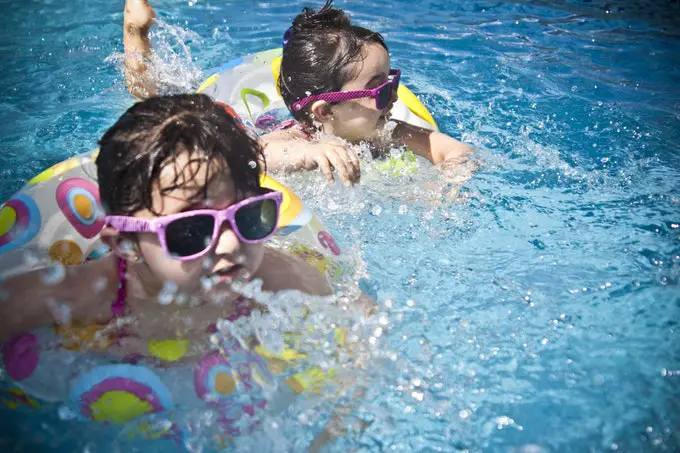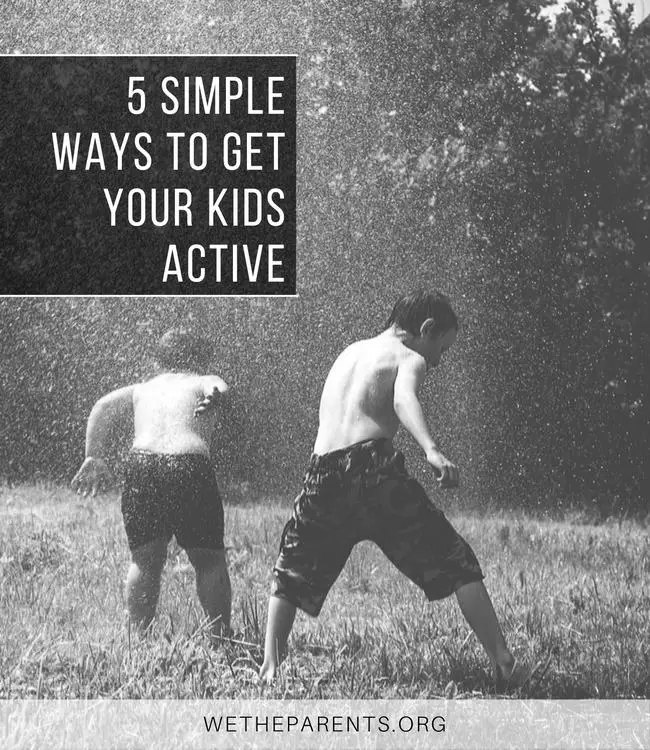It can be exhausting just watching a 6-month-old baby trying to master their own body. Around this time, they are constantly straining and stretching, intent on reaching a toy, rolling over, crawling, or sitting. It’s incredible!
This non-stop physical activity puts us adults to shame. And it continues into toddlerhood and beyond. When did you ever see a 3 or 4-year-old sit still? (Okay, if the TV is on, then my daughter enters a hypnotic trance and doesn’t budge – but otherwise.)
Being physically active is the most natural thing in the world. As a species, we’ve been doing it forever. Our very existence has depended on it.
Fast forward to today. Our modern, technology driven society has moved us away from our primitive nature. There now exist a host of reasons that mean, for some kids, it’s a struggle to maintain daily activity. These include:
- Technology – gaming consoles, tablets and smartphones;
- Ever increasing demands of school;
- Lack of role models, ie, parents who are active themselves;
- Kids feeling they are “no good” at traditional sports and competitive team games;
- Busy family life;
- Parents not feeling safe to let children roam freely outdoors.

Now:
It sometimes feels impossible to break family habits, and motivating a child who seems to have a positive hatred of physical exercise can, no doubt, be tough.
But wait:
It’s a lot easier than you think. Kids can change their habits much more easily than adults, and, if smart about it, you can get them easily inspired and self-motivated. Here are 5 ways to get started:
Tap into trends
There are some awesome trending kids toys that are brilliant for keeping them fit. Two of the best are scooters and balance bikes.
Scooters have been around for centuries but modern manufacturers have given them a twist and made them cool with kids. Balance bikes, on the other hand, are a newer addition to the world of toys.
They’re great for getting toddlers used to balancing before they move up to bicycles. Neither item is too expensive, and it’s your child’s health we’re talking about here. If your kid can have fun while keeping active, it’s worth it!
Get on your bike (and be a role model)
If no one else in the family is keeping fit, then it’s no surprise that your child doesn’t. We all know that younger children learn through imitation, but so do older ones.
If you’re concerned that your child isn’t active enough, then the first question to ask yourself is “am I”? Let’s face it, most of us could do with some more exercise, so this is your opportunity. Get fit together.
Pick something you’ll both enjoy (eg, swimming or cycling) and turn it into a weekly habit.
Keep activities age appropriate
It doesn’t take much to ignite a child’s natural desire to be active, but you do need to present them with age-appropriate opportunities.
Try to get a child doing something that is too advanced or too easy and they’ll simply get frustrated or bored. Don’t try to get your 7-year-old to do a 3-mile run or use your home gym. Instead, provide him with a soccer ball or stunt scooter.

Limit smartphones
Like most parents, you’re probably aware that your kids are looking at screens way too much. You’ve probably thought constantly about cutting it down, but, once it’s crept in, it can feel like a battle to reduce it.
You’re not alone. Nowadays, shockingly, kids and teens spend an average of 7 hours per day glued to screens. Yet the American Academy of Pediatrics recommends that children watch screens no more than 1 to 2 hours per day.
As we’ve said, reducing screen time begins by setting the example. Try designating times (eg, 5 – 5.20 pm, then 8 – 8.20 pm) when the family uses their devices, then, when time’s up, everyone puts their smartphones into a basket.
You can even turn it into a game with prizes and forfeits (including for Mom and Dad). Also, keep bedrooms screen-free.
Keep the focus on fun
Even if you’re really concerned about your child’s level of fitness, don’t turn into an army sergeant. Keep the topic of physical activity light and fun.
Inspire your child by providing the right equipment and toys. Think outside the box. A sprinkler toy in the summer can mean hours of fun in the garden. Make sure to regularly create opportunities by visiting parks, pools, and cycling tracks.
By taking this approach, you’ll have a much better chance of rekindling their natural desire to be active. This could last a lifetime. On the other hand, if you try to force it, then you could risk turning them off completely.
Wrapping up
As human animals, we have an innate desire and ability to move our body: flexing, twisting, jumping, and running. In our busy, technology-driven society, it is very easy to lose touch with this primal nature.
But remember, it’s there, just under the surface. With a few lifestyle tweaks, you can reawaken that dynamic ‘inner animal’, both in your children and in yourself. In fact, the most effective way to do it is together: parent and child.
Have fun and go for it!









